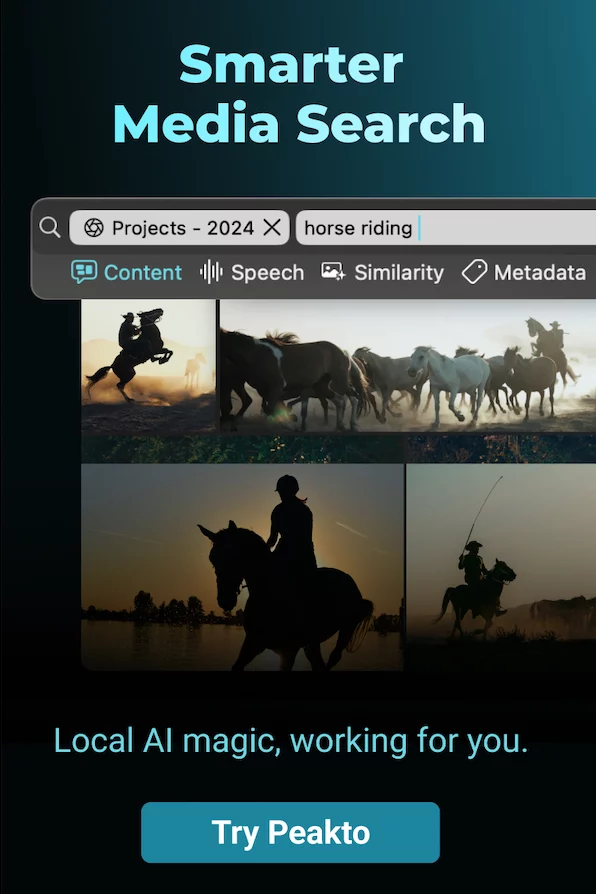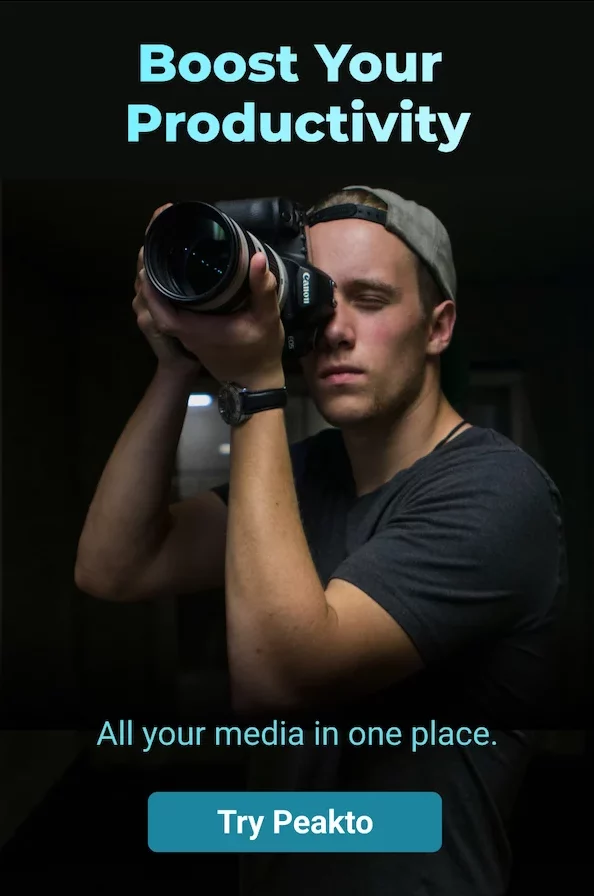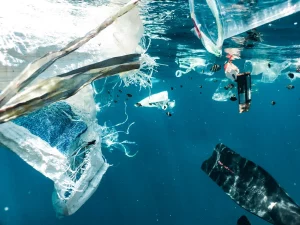The best photo management software Peakto 1.0 Pic Saint Loup has been announced for 2022. So we would like to introduce you to the beautiful world of the Pic Saint Loup, the emblematic mountain of Occitania in the South of France, close to the CYME headquarters in the hinterland of Montpellier.
Today we are going to meet Sébastien Bouin, the best French cliff climber, a dedicated professional and thrill seeker. He opened a new 9b/+ climbing route on the north face of Pic Saint-Loup. He shares with us his vision and the values he conveys through his profession. It’s a great pleasure for us to share with you this interview with a young and yet immense living legend of climbing. We also thank Sébastien Bouin’s team for these sensational images that were shared with us.
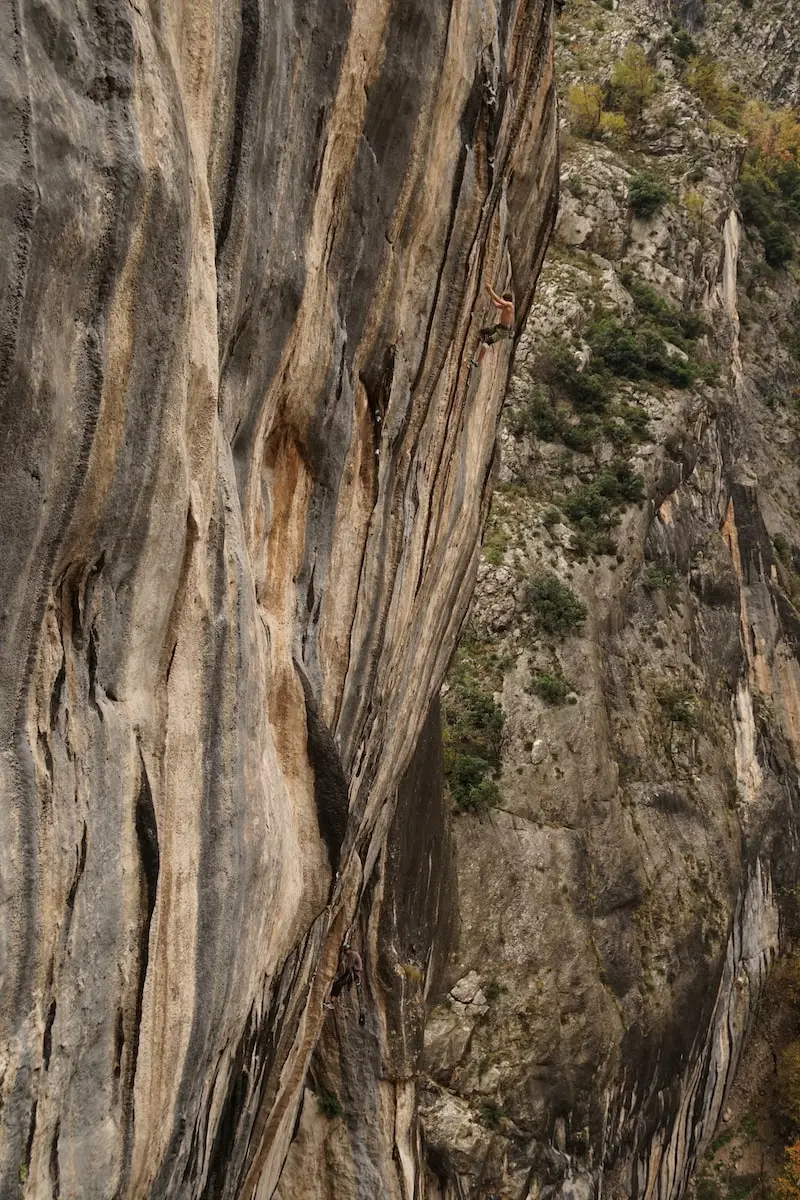
Why did you want to practice climbing? What do you like most about this sport?
I am 28 years old and I started climbing when I was 11-12 years old. That’s quite late to be climbing at a high level. At that age, those who are at the top of the world level were already very strong…. So I started a little bit late but worked intensively, and I was able to catch up.
Currently, I travel in France and around the world to achieve the hardest routes possible, and I communicate about my adventures with beautiful videos and pictures to make people want to climb.
I find that climbing is a mix of different aspects that attract me a lot. First, the outdoor aspect, because we are in the middle of nature, in sublime conditions that make us “dream.” The climbing environments are really bucolic and exotic. Outside, in splendid places, that’s where I feel good.
The other aspect is performance at such a high level. We are always faced with complicated challenges for which it is necessary to train for months and months before achieving them. The mix between the sports aspect and the nature aspect particularly attracts me. It is also important to know that in climbing, each route is different. It is a sport with infinite possibilities in which you always discover something new.
In climbing every route is different, it’s an infinite sport in which you always discover something new. In addition, you need all your mental and physical abilities as well as technique to achieve a track. This makes this sport a very complete sport that requires many different qualities.
“In climbing every route is different, it’s an infinite sport in which you always discover something new.”
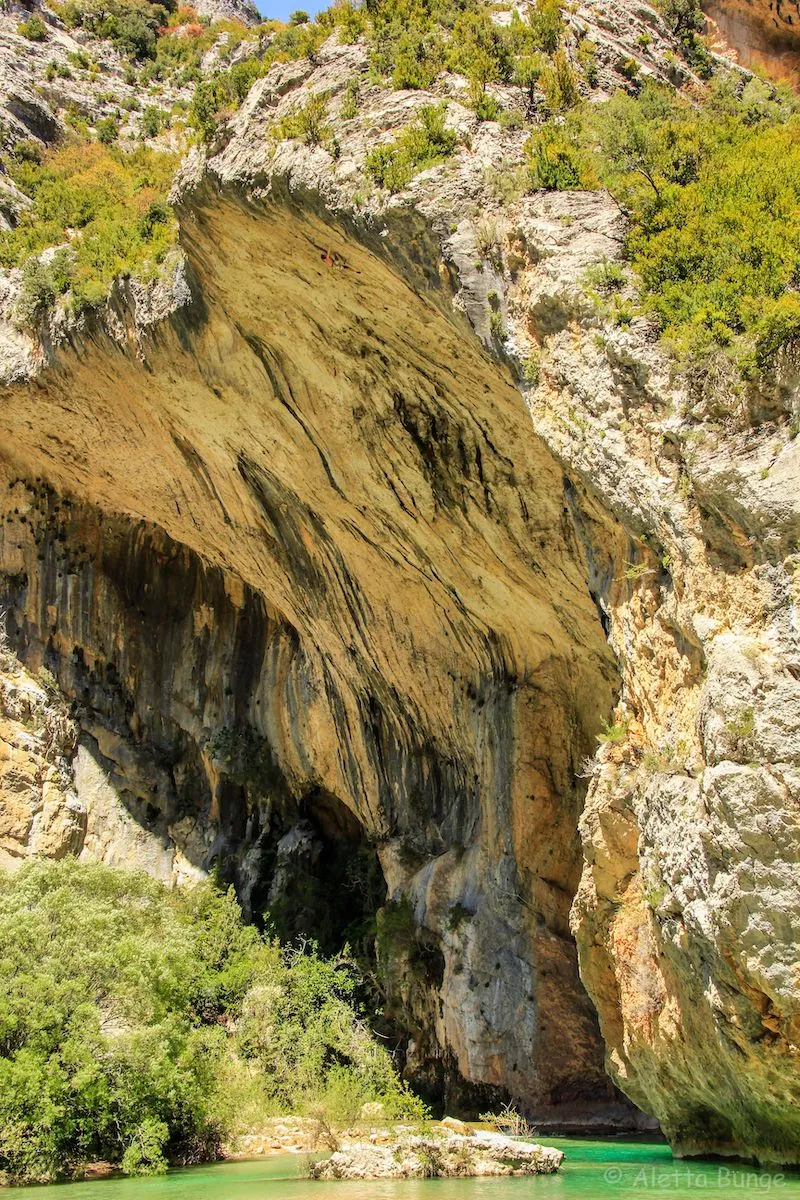
Can you share with us your thoughts on the subject of the environment and tell us a little more about your commitments/actions?
Climbing has developed a lot lately thanks to the promotion during the Olympic Games and the increase in the number of climbing gyms. Indeed, every year dozens–or even hundreds–of climbing gyms open their doors in France.
This gives birth to a new pool of climbers, a new population that is not necessarily educated in an outdoor environment–and this can sometimes be a problem.
For the moment, the increase in the number of visitors does not bother the regional authorities, but this could lead to the closure of certain areas in the long term. Indeed, the owners are not going to accept that their sites become dumping grounds or suffer other nuisances.
If we were to protect a particular site, climbers would just move to other sites, and the problem would remain the same. In response to this problem, some associations in France organize events like “Cleanup Days.” Their objective is to educate people and to clean the different sites.
Personally, to make people aware of this problem, I take the liberty of communicating about respect for the environment, for nature, because I find that it has more impact than simply performing my actions alone without talking about it.
I also partner with various climbing and mountain brands who share the same values and who communicate on this subject.
I think it could be interesting to communicate more in climbing clubs and associations about the consequences of waste on fauna and flora, and on the environment in general. Climbing is too beautiful a sport to spoil its image with this kind of stuff, and climbing fans are generally very receptive to messages about site protection.
” I take the liberty of communicating about respect for the environment, for the nature, because I find that it has more impact than simply performing my actions alone without taking about it “
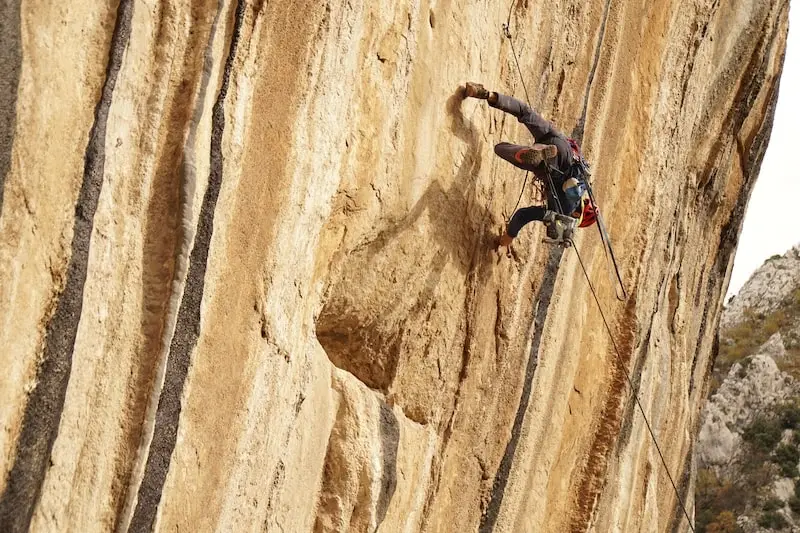
You travel all over the world to explore peaks renowned for their difficulty. And yet you open new routes in this region, which leads us to assume a real attachment to the Montpellier region. Can you tell us what you like about your home “stomping grounds”?
We live in an area that is perfect for climbing. If I lived in Dijon or Paris, it would be much more complicated to climb. Of course, I travel around the world in search of the hardest routes, but I also have this fantastic environment at home that allows me to pursue this sport in my own region.
This situation is quite exceptional, because it allows me to alternate between travel and time at home. It’s a balance that you have to find in your life because if you are always on the road, you get lost, and that’s not very good.
Occitanie is a great region for climbing, especially from September to May. The very hot summer is a more complicated season. The region is also very central; it is a transit point and is well connected with, not far away, big airports like Barcelona.
“I travel the world looking for the hardest routes, but I also have this fantastic environment at home in Occitanie.”
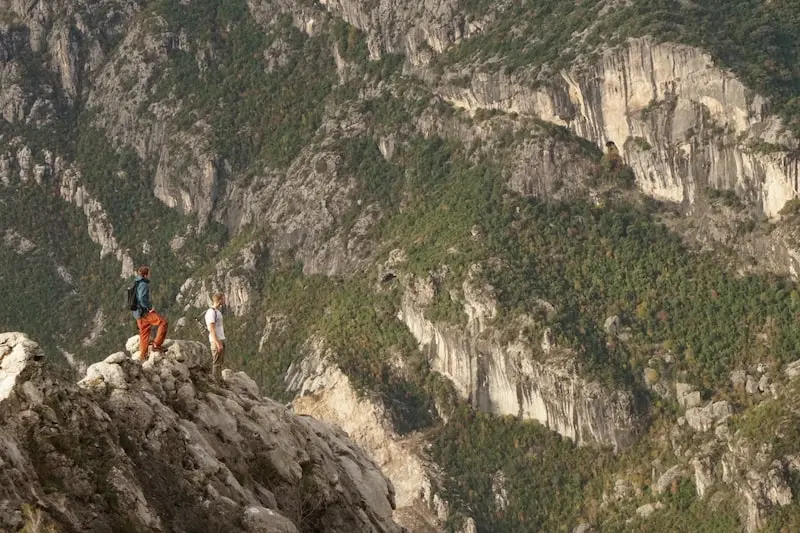
The approach to the sport has certainly evolved over the past few years. Have climbing techniques evolved since you've been practicing the sport? Do you contribute to the development of new techniques?
The climbing techniques on the rock itself have evolved a bit. There are some new directions, new holds, but I would say that it is mainly the training techniques that have changed.
The appearance of climbing gyms allows us to train more frequently, in the evening, when it’s raining, on different supports…. This allows us to increase the amount of time spent climbing and better develop our physical abilities. Thanks to this, we arrive stronger on the projects of conquering cliffs.
Climbing styles have also changed. Before, we used to climb on vertical walls with very small holds, whereas now we climb on leaning walls with gravity pulling us down.
This type of climbing practice has appeared thanks to the evolution of training tools. And then, there is also the improvement of climbing equipment with, for example, the evolution of less rigid climbing shoes, which allows us to push the level a little further.
“Before, when people thought about climbing, they thought of it as something that needed to be done quickly, whereas now we don’t care: we can give ourselves years to succeed, and the existence of climbing gyms allows us to prepare better.”

For example, I succeeded in the Pic Saint Loup route after 3 years of work. At the beginning I couldn’t do it at all, then the following year, a little better, until I finally succeeded….
There is a process of conceptualization of the gesture, which requires a mix of both mental and physical work. We note all the sensations and sequences, which then become easier and easier to do. Little by little we manage to align 1, then 2…then 30 gestures, and to be less and less tired.
It is obviously more convenient when you live close to the cliff you want to climb. When you move, there is more pressure because you only stay a few weeks on site.
“In this new conception of climbing, one seeks to go beyond the limit, always a little further.”

What are your inspirations? Who are the people you admire the most?
When I was a kid, like everyone else, I loved all the renowned climbers of the time who shared beautiful images and videos.
But nowadays, it’s personalities rather than popularity that inspire me, people who approach the sport in a slightly atypical way. The kind of people, professional or amateur, who have the idea of never giving up despite the difficulty. It is rather these people with this kind of state of mind who inspire me even though there are obviously friends who are both celebrities and very inspiring.
What other activities do you participate in outside of this sport?
Climbing takes up a lot of my time, but I really enjoy hiking in the mountains. I have also done a lot of outdoor sports like biking, but if I had more time I would like to ski and surf.
Do you like Sebastien's interview?
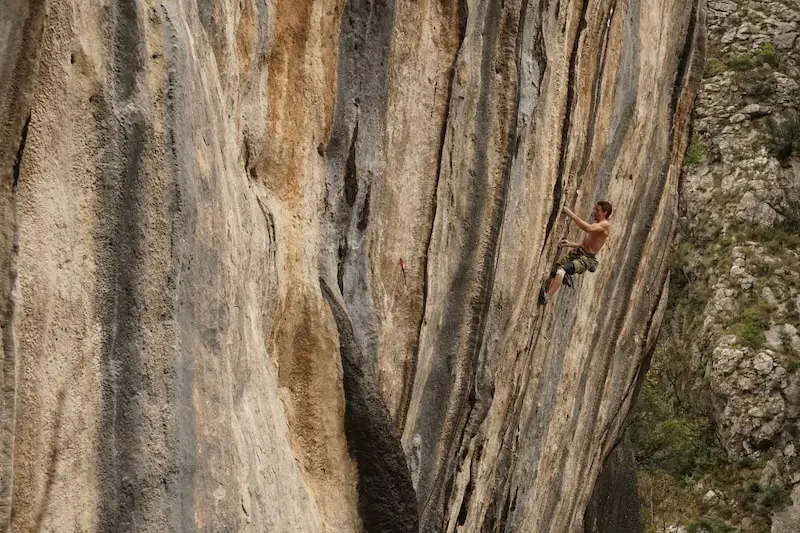
I heard that climbing as it was presented at the Olympics has been debated in the climbing community. What is your opinion on this?
Culturally, this sport has always been practiced outdoors, but it has evolved into an indoor sport for competition. The problem is that it is difficult to find new cliffs every time, and people coming from a country with many cliffs can train more often than others. That’s why they created new artificial walls. Since then, there are two different disciplines: rope climbing, where the goal is to go as high as possible, and bouldering, where the goal is to make as many moves in the boulders as possible. This way of doing things corresponds to what we could practice outdoors, with endurance on one side and power on the other.
Shortly before the Olympics, a new discipline was introduced, the speed event, which had never really been practiced in the climbing culture. Before the Olympics, this new discipline was already controversial. Speed was not a central element in the practice of climbing.
The problem is that this new discipline was born for competition and not from the climbing culture. It is as if a new sport was born.
The speed track is always the same; it does not change. We can compare it to a 100m race, and people always train on the same track while the other two disciplines always require an ability to adapt or take risks.
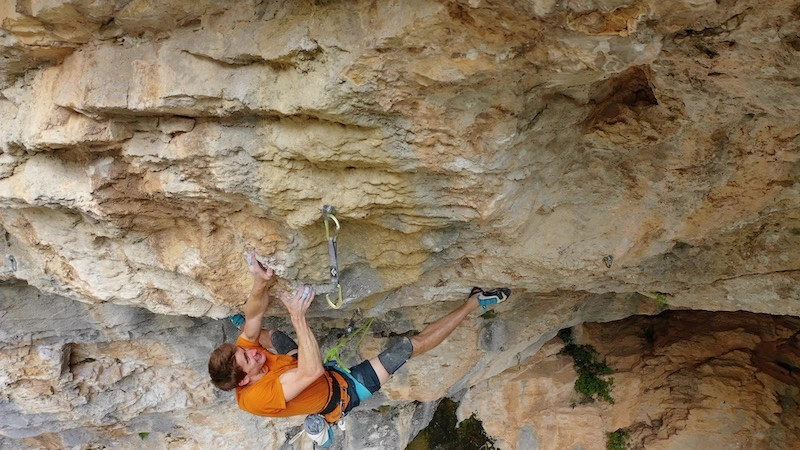
The problem is that for the integration to the Olympic Games, there was only one medal. We wanted to combine the 3 disciplines into one. The speed event was chosen because it was considered more impressive for a public that was not familiar with climbing.
So everyone had to try speed, but with very random results because the point system was not very successful. In the end, this Olympic event is nice for show but not very representative of what is really done in climbing.
In 2024 we will have two medals: one for speed and one for combined Blocks & Track. It is better, but I think it is a pity that speed monopolizes one of the two medals. We’ll see how things develop in the future.
For my part, I am concentrating on outdoor climbing.
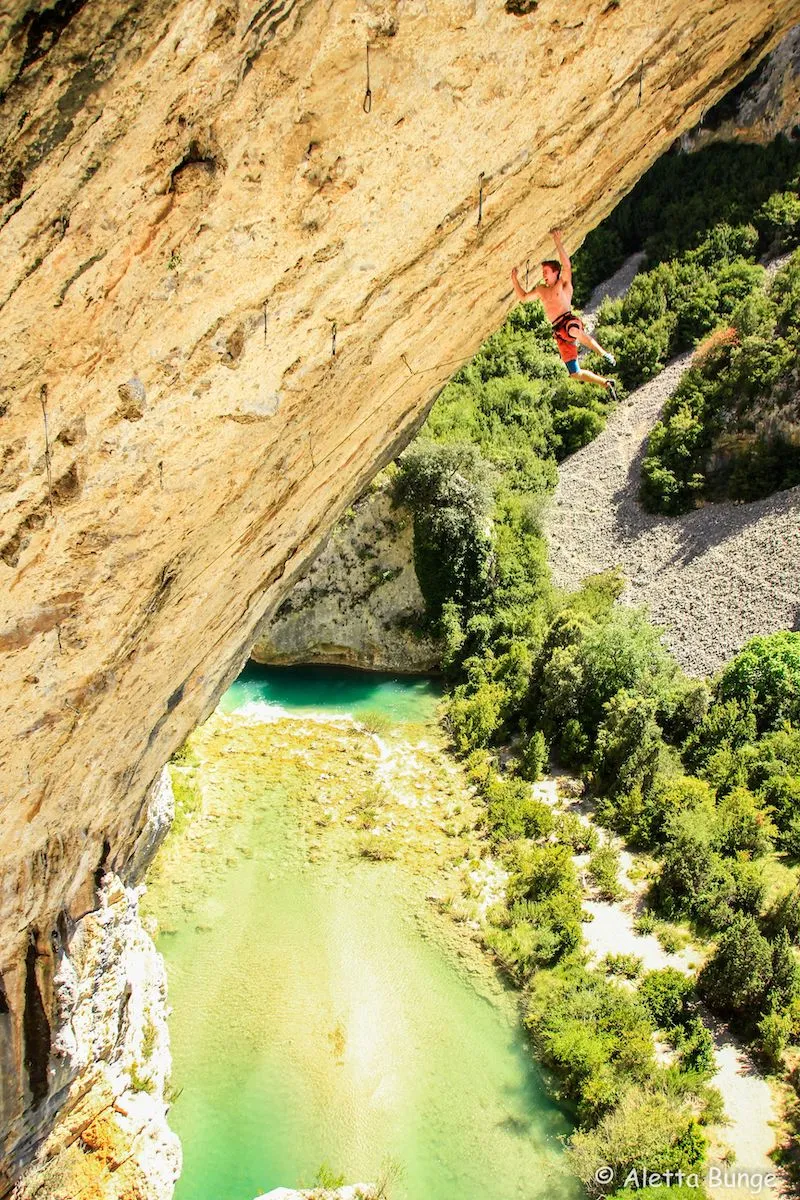
Opening new routes in climbing is a very special process. Is it innovation at the climber's level? What are you looking for through this exercise?
The opening of routes is something else again and my way of practicing it is also very particular. A basic opening is like this: you see a cliff that seems interesting, you see a line (line of weakness or line of holds) and you try to climb it.
For my part, I look for the hardest routes and there is a thin line between “it’s too easy” and “it doesn’t pass”. Because I’m really looking for difficulty, it’s complicated to find inspiring lines, with the right level of difficulty and especially natural holds. The Pic Saint Loup is a good example.

The ascent of the Pic Saint Loup must have been a challenge. Tell us about this feat. How did you get the idea? How much preparation time did it take?
The idea came to me because the path was already there. It was Cedric Ferraro who had revealed it. I had already done all the hard routes near the house. Now I was really looking for something even harder and new. I knew that this route existed and I went to see it. Cedric Ferraro had just equipped it but had not climbed it.
When I went up it for the first time, I found it very, very, very, very difficult, and I couldn’t do the right moves. But I thought, “This can work, I can do this.”
Also, a track like this next to the house is really perfect because you can come back from time to time, try to understand a little bit better, try to be stronger. That’s how I managed, after 3 years, to climb this particular route of the Pic Saint Loup, by dint of hard work and investment. In this sense, it was a chance to have a hard practice route near my home…. I hope now that other climbers from all over the world will come and try it!
Achieving a professional feat like climbing the Pic Saint Loup inspires and motivates thousands of enthusiasts. How do you manage to communicate worldwide and invite other climbers to evaluate your new route?
In the climbing world, it’s quite easy to communicate. When you achieve a good performance, the media often relay the information. It’s good to have inspiring video and pictures so that people can see what climbing is like. That’s what makes people want to do it.
The partners also help us to spread the information because some of them have a big community that follows them. Another thing that helps is that I try to share the information to a list of media not necessarily specialized in climbing.
I also work with a manager who does a little bit of this in order to share the information, get the images and videos out there and get people interested.
“The public likes to watch a video with a good story, and the feats inspire everyone a little bit.”
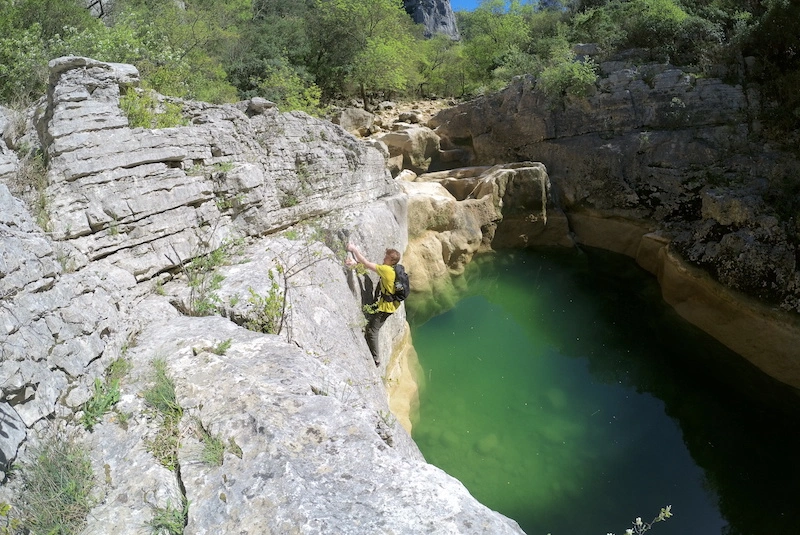
You are considered one of the best climbers in the world. How do you deal with this success?
First of all, I try to stay authentic and real in my approach to climbing and people. I think that’s what brings my personal touch and makes some people get attached to the character I represent. It’s my way of being, and I wouldn’t be able to detach myself from that. If I overplayed it, I think I wouldn’t feel good. It’s important to be yourself. The networks push you to transform who you are, to always do a little more, to communicate too much about things that are actually just normal.
The goal for me is to find a happy medium. Indeed, you have to talk about yourself…you have to put yourself forward; that’s the game. There are other climbers and other partners, and there is a little competition. If you put yourself forward, you also put your partners forward. So you have to do it intelligently to keep your authenticity, and it’s not easy.
For my part, communication is a subject that does not fascinate me very much. What I like to do is climb. But communication is part of the job. And so, I don’t know if it’s called “dealing with your success,” but yes, there is a real public aspect. When I go to train in a climbing gym I don’t necessarily always have a “real” relationship with people. The image I represent can sometimes interfere. I’m a pretty jovial person, so it’s okay, but there’s always a bit of that aspect to deal with. It’s not George Clooney walking down the street either, but there is still a little bit of a challenge to find the right balance between authenticity and external image.
Finally, I will put the question into perspective. My success is not crazy either, in the sense that I’m not in the World Cup final. It’s still well under control.
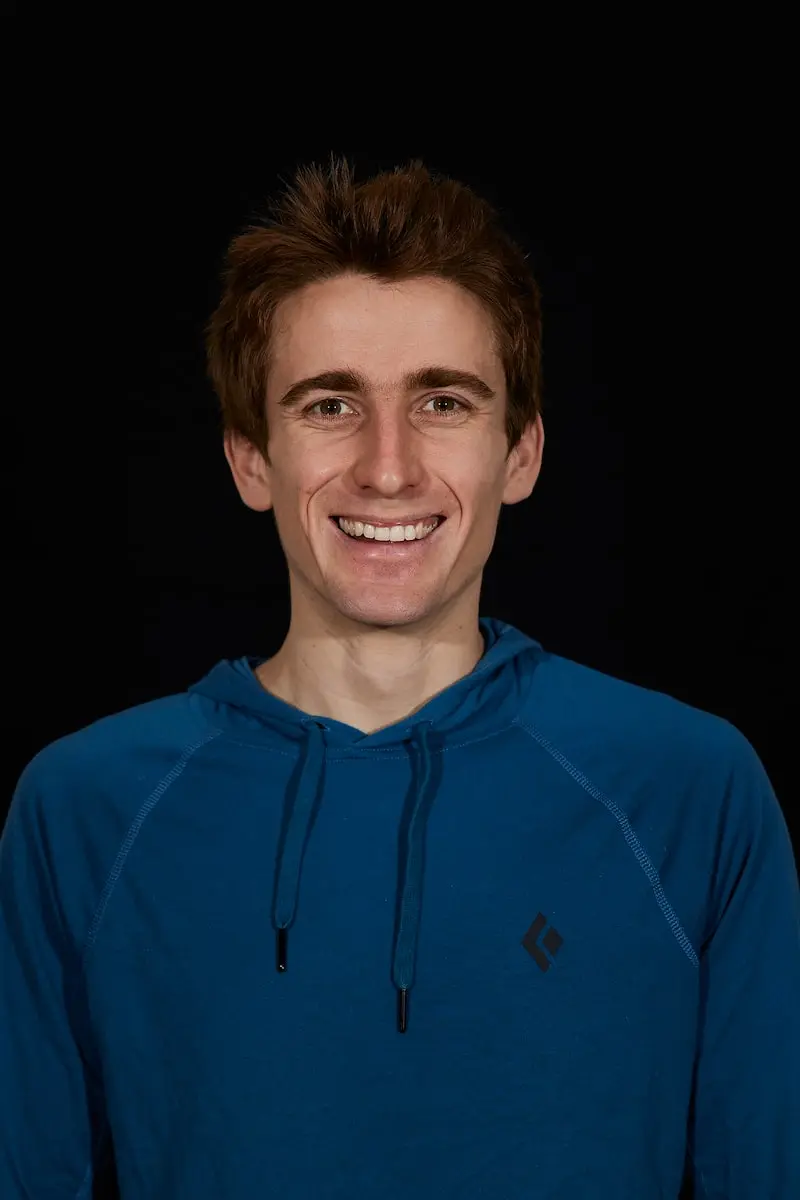
Thibaut Marot and other photographers regularly take pictures of you during your different projects. What do these pictures mean to you?
Photos and videos mean a lot to me because they allow me to communicate. They allow you to leave a trace, to export what you have accomplished. In climbing, it is not possible to follow our exploits live. So photos and videos are absolutely essential.
The photographers like Thibaut Marot or other photographers and cameramen are really people without whom I could not work. If they are not there, I can’t share my exploits. The word is not enough–you need the image.
I would even say that the images are almost more essential than the performance. Many “high-level outdoor climbers” are now converting to “discovery and exploration of the environment.” They are less into performance than into discovery. They make great videos, great pictures, and people follow them with pleasure.
Even high-level climbers like to follow them. And they can sometimes make me dream, too… So yes, photo and video are essential for the world of climbing.

What is the best experience you have had as a professional climber?
I’ve had many memorable climbing experiences, but I think it’s the journey that interests me most. You start with a goal that seems impossible. You start from very far away–you can’t even do the first moves or sequences–and little by little, with a process of work, a process of discovery and a process of training, you manage to do moves and to do this route at the end. Sometimes it takes ten days to integrate a single movement when there are more than 30 to link…
It’s like one day I decide I want to go under 10 seconds in the 100 meters when I’m at 25 seconds. Success seems so far away and impossible. You think, “Why am I doing this?” but you keep going.
You keep going; you finally gain a few seconds, and by doing this, everything gets much better. And little by little, you get to do what you want. Sometimes, when I am close to success, I look back and marvel at all the transformation that has already taken place. This is a feeling that can be accessible to both amateurs and professionals.
Of course, since the pros spend more time on the exercise, it accentuates this process. You can look for things even further and harder because you have more time to work on them, more time to practice.
Does this interview inspire you?
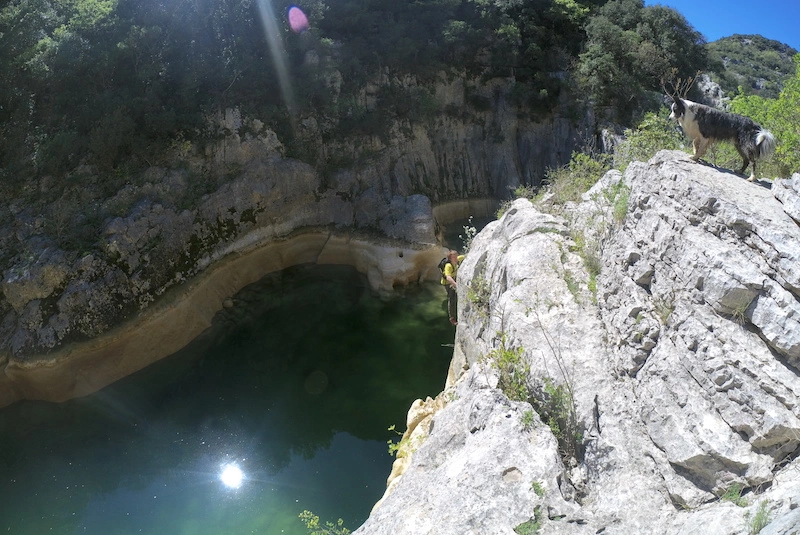
How does one progress; how is knowledge transmitted in climbing?
A lot of knowledge is passed on through practice. By watching people who climb a little better, you learn certain things.
More than on the specific movements in itself, there is a lot to learn on the way to climb–on the way to put rhythm in a route, to accelerate, to decelerate, on the ways to take risks, to push on the legs, to make a movement in a very slow way, then a movement in a very dynamic way.
In climbing, what counts is the way in which we take the information, the way to process it, to anticipate the action, to memorize the action. So we are on the tactical aspect with the management and the position of the body rather than on a movement in itself. The movements are indeed so varied with infinite combinations of hand and foot positions. It is all these concepts that are interesting to work on.
“In climbing, what counts is the way in which we take the information, the way to process it, to anticipate the action, to memorize the action…”

The experience you have acquired will undoubtedly motivate future generations. What advice can you give to amateur climbers or other sportsmen to "succeed" in their field?
Motivation is the key word. Even if you are not gifted at the beginning, if you are motivated, if you really like climbing and if you put all your energy into it, then you will inevitably pick up things and you will progress. You also have to find a balance, psychically and physically.
To last in the duration and to progress on the long term is possible only if one has found a certain balance. You can be two or three years at the top of your game and give everything you have in life to keep going, but if you don’t have a balance in your life that allows you to maintain your desire and stay on course, it will be complicated, and that will also have an impact on your motivation. So yes, try to live your desire to the fullest and also find the balance that suits you.
“Don’t be afraid to go beyond, to break the barriers a little, because there will always be barriers–but they are just waiting to be overcome.”
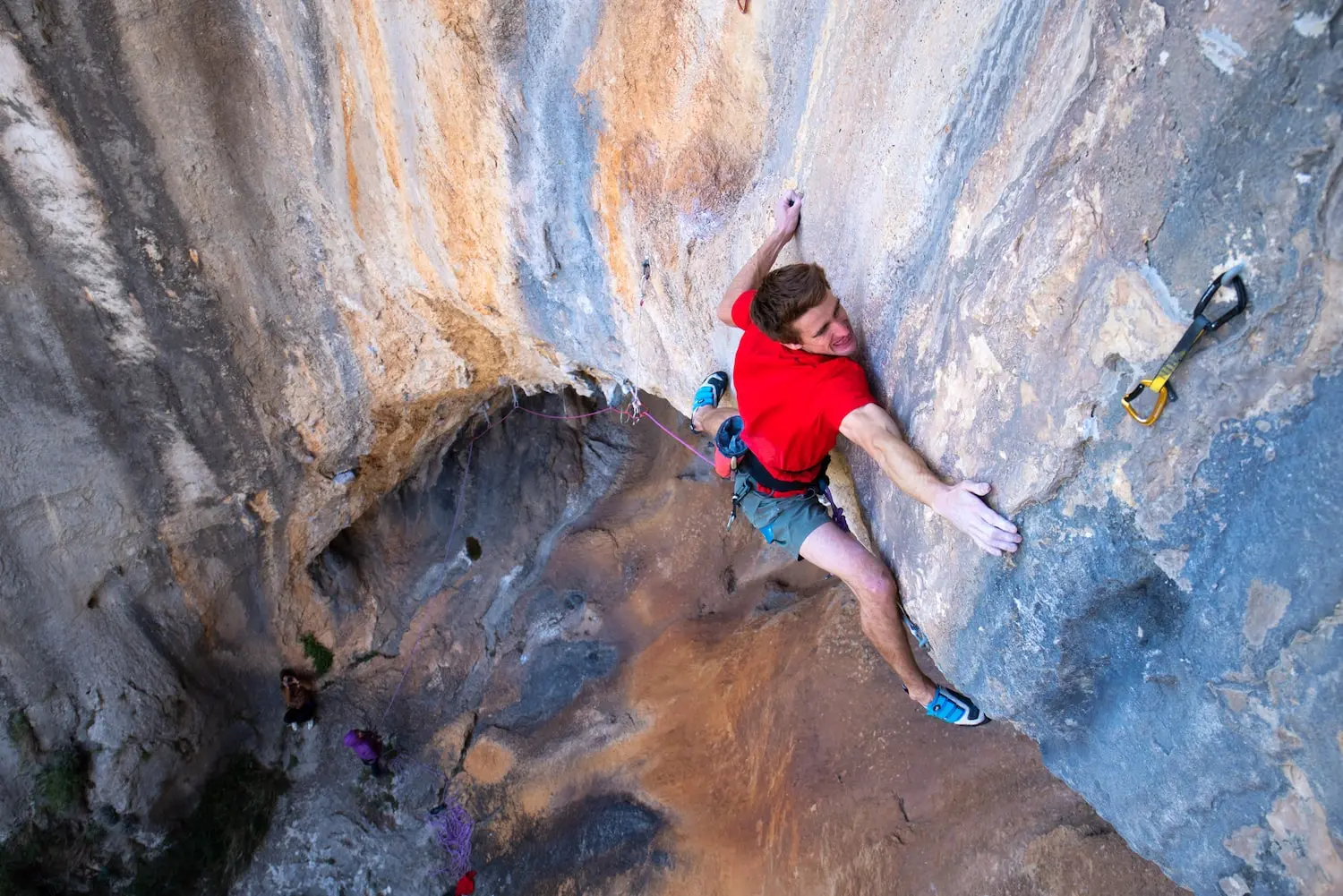
CYME would like to extend a special thanks to Sebastien Bouin for taking the time to participate in this interview amidst his many projects. His pursuit of self-improvement, as well as his authenticity and generosity in sharing, have truly impressed us. We also applaud his strong commitment to sustainability and environmental preservation and protection.
At CYME, we share all of these values, as we strive to help our community preserve the beauty and tranquility of our planet, unique places like Pic Saint Loup, and to make its namesake, Peakto 1.0 Pic Saint Loup, the best it can be.
Extend this moment with Sebastien Bouin by following him on his Instagram.
We also invite you to read the beautiful interview of Thibaut Marot, one of Sebastien Bouin’s photographers.
Photo credits: Aletta Bunge, Thibaut Marot, Semicontinuous, Tilby Vattard, Simon Barrau, Franck Andolfatto, Raphael Fourau.
Video credits: Raphael Fourau & Yucca Films.



